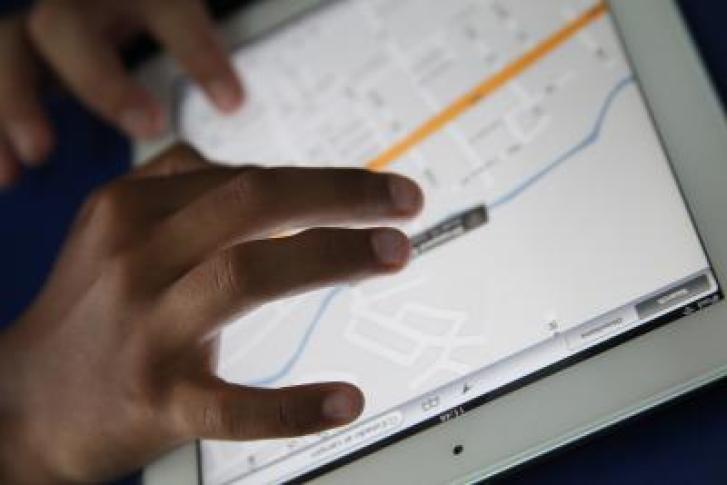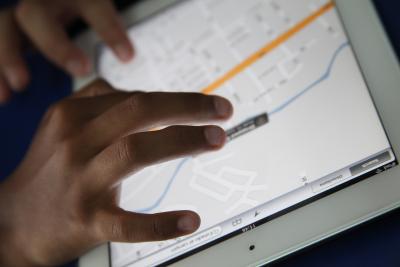
 Source: Ministerio TIC Colombia, used under Creative Commons licenseEach week, David Souter comments on an important issue for APC members and others concerned about the Information Society. This week’s blog looks at how the digital divide has changed since the concept was first developed in the 1980s.
Source: Ministerio TIC Colombia, used under Creative Commons licenseEach week, David Souter comments on an important issue for APC members and others concerned about the Information Society. This week’s blog looks at how the digital divide has changed since the concept was first developed in the 1980s.
‘Bridging the digital divide’ has been a central theme – perhaps the central theme – of international agreements, development programmes and national strategies concerned with ICTs for almost thirty years. But what it means has changed during that time.
This week’s post looks back at the origins of the concept of a digital divide and asks three questions. How has our understanding of digital divides changed in the last thirty years? How hard are they to bridge? And does that mean we should rethink our strategies?
How the Maitland Commission saw things
We can date debate about the digital divide to the mid-1980s, to an ITU commission chaired by a British diplomat called Donald Maitland. Its report, The Missing Link, is often cited, but less widely read. What did it say?
Remember, first, that it was written in the days of fixed telephony: before mobiles and the Internet altered our assumptions about communications. And even fixed telephony was rare. There were only around 600 million phone lines worldwide, three quarters of them in just nine countries. In much of Africa, there was less than one phone line per thousand people.
That, the Commission said, was wrong for two reasons. ‘Neither in the name of common humanity nor on grounds of common interest’ was such disparity acceptable. The problem would get worse, too, because an ‘information society’ – the Commission used the term – was on its way, which could and should be at the root of future world prosperity. It was, therefore, in every country’s interest to build communications infrastructure and enable communications use for everybody everywhere.
There was, the Commission believed, ‘no good reason why by the early part of the next century virtually the whole of mankind should not be within easy reach of a telephone and of all the benefits this can bring.’ And it made recommendations for international cooperation to achieve this.
And what about today?
Of course, the Information Society we have today – and that we look to in the future – is very different from that anticipated in the 1980s, but the core message of universal access that came out of Maitland is recognisably close to that in the WSIS outcome documents, in current development agency thinking, and in national strategies for ICT4D.
Yet digital divides are with us just as much today as they were in Maitland’s day, and were emphasised in last year’s ten-year review of WSIS. The latest Measuring the Information Society report from ITU shows mobile phone subscriptions in LDCs are little more than half as widespread as they are worldwide. Those for mobile broadband were running at just 6% of population in Least Developed Countries compared with 21% in developing countries generally and 84% in the developed world. Where subscription rates are low, they generally reflect divisions between income groups, as well as urban and rural communities, within societies.
What has changed?
So what has changed in these divides and our understanding of them over thirty years? What do we better understand? I’ll point to three things.
First, technology matters and today’s differs from yesterday’s. Maitland and his colleagues expected innovation but did not anticipate its nature. They thought in terms of fixed phones not mobile Internet, of community facilities rather than the pervasive individual access that we have today. Since WSIS, the focus of concern about digital divides has moved from basic access at the level of communities to the quality of access available to individuals: from whether there’s a fixed line in the village to whether there are mobiles in the household, how reliable and affordable they are, and what bandwidth is available to access Internet through them.
Second, we now have a more disaggregated view of digital divides. There are important differences between the experience of most developing countries and those of LDCs, evidenced in the ITU’s annual ICT Development Index between capital cities, towns and rural areas; between different social groups. The gender digital divide which is apparent in many countries has drawn increased attention. We know much better now that are not dealing with a single, undifferentiated phenomenon, but with multiple divides.
Third, we are – or should be – much clearer than we were on causes. All technologies are adopted first and fastest by those (countries, communities or individuals) that have the money to afford them and the skills to make effective use of them. Better infrastructure is deployed first and used most where use of it will generate most profit. Developed countries, their citizens and businesses will take up innovations earlier than developing countries because they have the money, skills and infrastructure needed. Digital divides between social groups, including the gender digital divide, are closely associated with differences in income and educational attainment.
Digital divides are hard to bridge
Digital divides are hard to bridge for two main reasons, which both stem from this.
First, they’re rooted in structural inequalities. The poor have less access to ICTs because they’re poor and, probably, less skilled. ICT strategies have recognised this by placing emphasis on affordability and capabilities as well as connectivity, but the problem’s deeper. It means that digital divides can’t be addressed by digital policies alone. To bridge them, we also need to bridge the structural inequalities that underpin them.
Second, they’re moving targets. Access and usage in developing countries (or in poorer rural communities) are growing fast, but that doesn’t mean they’re catching up. By the time mobile phones became pervasive in them, 3G had become the norm in developed countries (and in capitals). Likewise narrowband and broadband; lower and higher bandwidth. The other side of the divide is always moving further distant, and the only way to stop it doing so would be to suspend investment and innovation, a moratorium that’s neither sensible nor practical.
Rethinking what to do
So, would it help to rethink how we address these digital divides? I’ll make three suggestions where I think it might.
First, we should see digital divides more clearly as symptoms of broader social and economic inequalities, not just as means of tackling inequalities (though the World Bank has recently pointed out that they may also widen them). It is overall development strategies concerned with reducing poverty, inequality and educational disadvantage that will have most effect on bridging digital divides within societies. ICT strategies can and should mitigate these inequalities but they can’t eliminate them.
Second, we should integrate ICT strategies more comprehensively with other infrastructure needs. LDCs and disadvantaged rural communities are not just disadvantaged where ICTs are concerned; they suffer from multiple infrastructure deficits. ICT infrastructure should not be seen in isolation. Universal access strategies for ICTs will have more impact on people’s lives and on national development if they are integrated with access strategies for power and transport (as well as health and education).
And, third, we should recognise that new technologies will keep changing the nature of digital divides, making gaps between ICT-rich and ICT-poor very hard to bridge. The other side of the digital divide is not static; it’s moving every day as new technology’s deployed and fresher innovations are adopted in wealthier societies. ICT strategies need to recognise that the bridge they’re building may never be completed – and that that’s why it’s important to keep building.
Next week’s blog will look at the role of information intermediaries in managing access to information.
 David Souter is a longstanding associate of
David Souter is a longstanding associate of